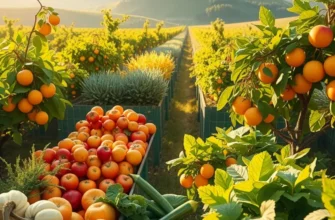Across continents and through centuries, ancient taverns have been the beating hearts of culinary traditions, where stories blend with flavors. These gathering places offer much more than food and drink; they serve as windows into the cultures and histories that have shaped their regions. This exploration invites you to wander into the past, where each tavern tells a tale, and every dish is steeped in rich heritage. Let’s embark on this savory expedition through some of the world’s most renowned ancient taverns and the extraordinary cuisines that await within.
The Legendary Taverns of Europe: A Sip of History

Europe, with its cobblestone streets and ancient castles, is home to taverns that echo with centuries of stories and gastronomy. These taverns are not just places to eat and drink; they are living museums of culinary tradition, offering a hearty taste of history alongside their brews and meals.
In Austria, the Heuriger provides a cozy retreat from the bustling streets. These wine taverns, often family-operated, dot the rolling hills of Vienna. Here, travelers can sip on the freshest of young wines made from local vineyards while savoring a variety of artisanal cheeses and freshly baked breads. This tradition of serving “new wine” is rooted in Austrian history, marking the end of harvest and the beginning of the wine season.
Moving southwest, Spain offers a different yet equally enchanting tavern experience. The vibrant tapas bars, scattered throughout cities like Seville and Granada, are a feast for the senses. Plates brimming with diverse flavors are meant to be shared among friends and family. Tapas, a tradition believed to originate in the need to cover one’s drink with a small plate of food, now inspires a ritual of social dining. From patatas bravas to boquerones and jamón ibérico, each tapa tells a tale of the region’s diverse influences and culinary ingenuity.
Meanwhile, in Ireland, the public house, or “pub,” is an integral part of the social fabric. These establishments are more than just places to enjoy a pint of stout; they are community hubs where stories are shared, music fills the air, and the spirit of camaraderie flourishes. The warm glow of the hearth invites patrons to linger, telling stories and singing along to traditional tunes. Irish pubs are renowned for their hearty dishes, such as the iconic Irish stew or a perfectly cooked Shepherd’s pie, offering comfort in every bite.
Journeying further afield, each European tavern brings unique culinary offerings to the table, all while adhering to time-honored practices. For those keen on reducing waste while enjoying such rich culinary traditions, it’s worth exploring tips on low-waste cooking and prep. These practices not only honor the past but also ensure that these cherished experiences can be sustained for generations to come.
As you travel through Europe, each tavern invites you to sit back, enjoy, and take in not just the food and drink, but the history and community it represents.
Crossing Continents: Ancient Taverns and Their Culinary Signatures

Traversing the continents, ancient taverns outside Europe reveal a rich tapestry of culinary traditions. In Asia, taverns serve as not only rest stops but vital cultural hubs. Japan’s izakayas, for instance, blend the art of hospitality with selection curated from the sea and land. Here, patrons savor dishes like yakitori, skewered chicken grilled over traditional charcoal, seasoned with local spices and sauces passed down through generations. To accompany these delights, sake, brewed from native rice and aged to perfection, embodies centuries of craftsmanship.
In contrast, the teahouses of China offer a tranquil refuge where tea is the mainstay. Each variety—from the robust Pu’erh to delicate Jasmine—reflects regional terroir, paired beautifully with small bites such as dim sum. Embracing local ingredients like lotus root or bamboo, these dishes carry stories of trade and tradition stretching back to the Silk Road era, a topic explored further in this culinary article.
Across the Pacific, the Americas tell their own tales of tavern culture. In Mexico, cantinas serve as lively spaces wherein food and drink merge indigenous and European influences. Here, tacos al pastor, with its marinated pork slowly roasted on a spit, delivers flavors from a convergence of Aztec and European traditions. Tequila, born from the local agave plant, provides a spirited accompaniment, each sip speaking of the land it comes from.
In Peru, chicherías are rural taverns offering chicha—fermented corn beer—as a staple. More than just beverage outlets, chicherías play a role in community celebrations, where dishes like ceviche illuminate the Peruvian use of fresh fish and citrus. Such preparations demonstrate a dialogue between the Inca and Spanish culinary practices, leveraging both local produce and techniques.
Each tavern, whether in Asia or the Americas, becomes a custodian of cultural heritage, reflecting the symbiosis between indigenous ingredients and age-old cooking methods. These establishments act as cultural bridges, merging eras and peoples through the universal language of food. As patrons savor these unique creations, they partake in a living history that continues to evolve, shaping and being shaped by its historical roots.
Final words
The exploration of ancient taverns reveals a fascinating tapestry of culture, history, and culinary artistry. Each tavern, with its unique ambiance and carefully crafted dishes, encapsulates stories from times gone by, while also showcasing the diverse flavors of their surroundings. By indulging in the flavors of ancient traditions, you not only satisfy your palate but also forge a deeper connection to the culinary heritage of different regions. As you venture into your next dining experience, consider the history behind the food and the stories waiting to be told, enriching your culinary journey.








